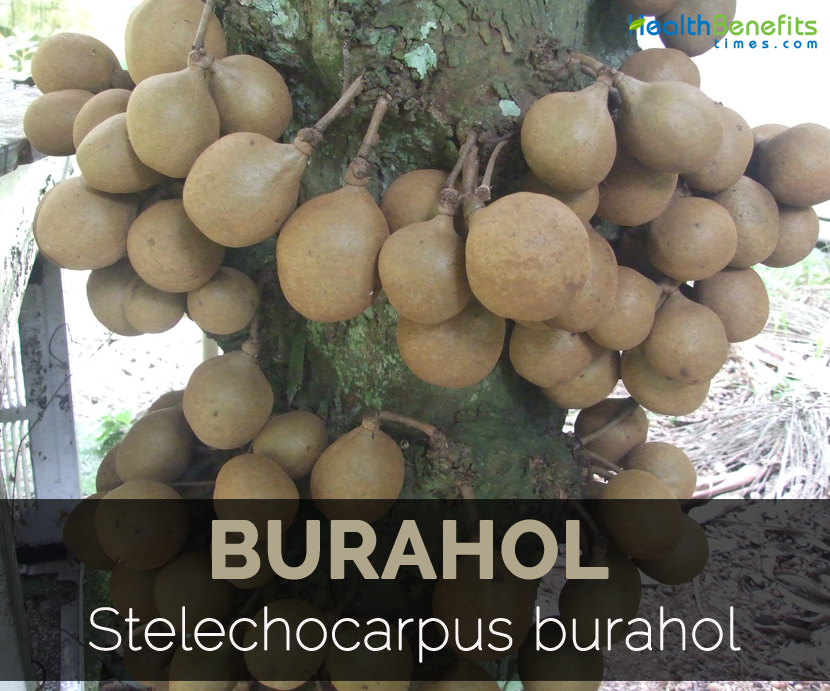| Burahol Quick Facts | |
|---|---|
| Name: | Burahol |
| Scientific Name: | Stelechocarpus burahol |
| Origin | Java, Indonesia, and is grown also in Southeast Asia throughout Malesia as far as the Solomons |
| Colors | Brownish |
| Shapes | Sub-globose to obovoid, 5–6 cm in diameter |
The plant is endemic to Indonesia, Java and is grown in Southeast Asia throughout Malaysia as far as Solomons. The fruit grows straight from tree trunk and not on branches. It is found in Indonesia and also introduced to parts of South America such as Florida and Honduras. Recently it is introduced to Philippines and Australia.
It is an endangered species which is cultivated in Indonesia for the use in perfume industry. The fruit possess diuretic properties which are found to be good for kidneys, prevent formation of stones and healthy functions. The wood of the tree is used for making furniture and construction.
Plant description
Burahol is a large and erect evergreen tree which measures 25 meters tall with trunk having 40 cm in diameter with dark grey to brown to black and bark is covered with various thick tubercles. Leaves are elliptic oblong to ovate-lanceolate about 12–27 cm × 5–9 cm having distinct mid rib. Flowers are unisexual and green turning whitish and fascicled on tubercles. Male flowers are ramiflorous on older branches measuring 1 cm in diameter having 3 ovate deltoid and obtuse sepals and 7-8 mm long imbricate petals in two whorls of three. Fruits are brownish, sub globose to obovoid, juicy about 5-6 cm in diameter with yellow pulp enclosed with 4 to 6 ellipsoid seeds about 3-3.5 cm long.
- In Indonesia, fruit pulp is diuretic and used for preventing kidney inflammation and also used as deodorant for making sweat fragrant.
- The fruit helps to lower smell of sweat, breath and urine.
Health Benefits of Burahol
- The study shows the ability to restore performance of enzyme production in liver and assist in regenerating cells from damaged liver.
- It accelerates the process of cell regeneration in kidneys and prevents kidney cell damage.
- It acts as a remedy for gout.
- It speeds up the process of cell regeneration and also maintains body fitness and keeps person young.
- High content of Vitamin C helps to make skin clean. It cleanses the blood, strengthen liver, kidneys and lungs.
Culinary uses
- Fruit pulp is eaten and the fruit is sold in local markets in Java.
- Ripe fruit is consumed fresh.
References:
https://www.itis.gov/servlet/SingleRpt/SingleRpt?search_topic=TSN&search_value=506194#null
https://en.wikipedia.org/wiki/Stelechocarpus_burahol
http://tropical.theferns.info/viewtropical.php?id=Stelechocarpus+burahol
https://infocultures.blogspot.com/2018/08/10-benefits-and-content-of-kepel-fruit.html
http://herbs-treatandtaste.blogspot.com/2011/01/kepel-fruit-benefits-and-uses-of-kepel.html
Comments
comments
